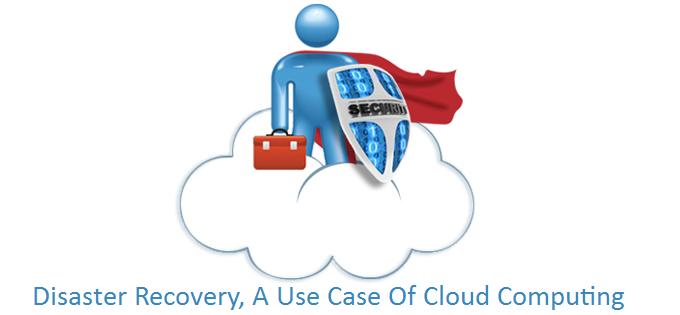Disaster Recovery, A Use Case Of Cloud Computing

Cloud computing represents a new paradigm for understanding the technological services. The versatility of the infrastructure and model-based platforms enable cloud infrastructure managers to expand its catalog of current services and add new. An example of new services developed from the Cloud Computing IaaS (Infrastructure as a Service) model would be the RAAS service (Recovery as a Sevice or Disaster Recovery Services). This service offers a replication and disaster recovery based cloud that keeps a copy of their systems and information in a second location as a contingency platform disaster or unavailability of the platform housed in the original location.
Backup system and application services are having a good acceptance since they are a flexible solution that adapts to the needs of each client and to guarantee Times Reduction Objectives (RTO) and recovery (RPO) by automating tasks and Replication recovery. Recovery Point Objective (RPO) can be aligned to the business needs of the client, which allows adapting the service to the objectives defined in the Corporate Business Continuity Plan of each company. Among the main benefits of a service, Disaster Recovery emphasizes the ability to protect business-critical systems, including the recovery of operating systems (Windows and Linux) and application recovery, thereby reducing the risk and costs associated with the unavailability of information.
Being hosted in these safe accommodation geographically separated from the original, you get increased security (floods, terrorism, …), although it should be noted that the contingency accommodation must meet the same legal requirements. Another key benefit of disaster recovery is based on cloud hosting scalability when defining the scope in terms of the services to be protected. This allows to adapt to any conditions included in the corporate contingency plan. The client can start protecting those most critical servers exclusively for your business to go further or even migrating additional services to complement existing backup system in other sites.
RAAS in some ways represents an evolution of traditional replication technologies (DRS), but be a service developed in Cloud Computing IaaS mode allows significant cost savings, as it eliminates the need to purchase hardware, book space, allocate human resources to the preparation and execution of tests, etc.. Paying only for the services used. Operation of a Disaster Recovery service Although the operation of the Disaster Recovery services may vary depending on the provider, you can generally extend the protection from physical or virtual machines to different virtual platform.
Bear in mind that while it is possible to replicate physical servers, few providers support it, and if it makes the physical servers support at source on servers in the datacenter contingency. virtualization (and the fact that replication is done from the hypervisor) offers advantages that can be applied to business continuity and disaster recovery, including: statewide encapsulation of a virtual machine (memory, disk images, E / S, and the status of the device). Encapsulation allows the state of a virtual machine that is stored in a file. Save the state of a virtual machine to a file that allows the transfer of an entire virtual machine to another host. Hardware independence eliminates the need for a complete replica of hardware in the recovery site.
This eliminates the cost of purchasing and maintaining a system that is inactive until a disaster occurs. Hardware independence allows an image of the protected site system to boot from the disc on the recovery site in minutes instead of days. This phase will determine the replication mechanisms suitable for each application (hypervisor, data backup, mechanisms of the application), consistency that is minimum necessary for all applications to launch its services in the contingency site (crash, file, application), and the RTO can be expected throughout the plan from the applications and data volume comprising the protected platform. During the second phase, it will proceed to the installation and commissioning of the platform contingency.
This phase will take place when the replication settings hypervisor level and cabin, and creating scripts and reconfigurations required (network, nomenclature, DNS) for the proper functioning of the recovery plan. Then proceed to the execution of the first tests of the RTO recovery and establishment of reference and the creation of a Disaster Recovery Plan. It is a consensus document on establishing the protocol for the formal declaration of a disaster and the activation procedure contingency site.
In the third and final phase, it will be the management of the service. In this phase periodic testing to ensure the proper functioning of the service is done. One advantage of using virtualization in the contingency site is ease to perform recovery drills without affecting the protected site. This feature reduces the risk of failure recovery when this is necessary. During the test simulates the full recovery of services and any discrepancy is detected between the recovery plan and the changes that have been made at the protected site. This recovery plan is updated. Periodic tests help to detect changes in the RTO and take corrective action.
- How Cloud Computing Is Changing The Labor Market - March 25, 2015
- Adopting Infrastructure as a Service Can be a Good Deal - March 17, 2015
- Will Virtualize? Take These Six Points Into Consideration - March 12, 2015
